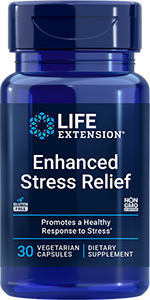- Science & Research
- Science News
- Newsletter
- 2011
- December 23

Newsletter
Newsletter
New Role For Vitamin E Uncovered
New role for vitamin E uncovered
Friday, December 23, 2011. In the journal Nature Communications, researchers from Georgia Health Sciences University unveil new findings concerning the ability of alpha-tocopherol (vitamin E) to maintain and repair the cell membrane: a permeable barrier surrounding the cell that separates its contents from its environment while allowing the transport of necessary substances. "Without any special effort we consume vitamin E every day and we don't even know what it does in our bodies," remarked corresponding author Paul McNeil, PhD, who is a cell biologist at GHSU. In their introduction to the article, the authors note that "Considerable evidence, dating from early studies, shows that muscle health is dependent on an adequate supply of dietary vitamin E . . . Vitamin E deficiency secondary to disease in humans is associated with muscle weakness, elevated creatine kinase levels and myopathy, and low blood levels of vitamin E are associated with a loss of muscle strength in the elderly. Why vitamin E, at the cellular and molecular level, is crucial to muscle health has remained an unanswered question." In the current series of experiments, Dr McNeil and colleagues demonstrated that treatment of cultured myocytes (muscle cells) with alpha-tocopherol results in increased membrane repair to injured cells. They also showed that vitamin E treatment could correct the plasma membrane repair deficit exhibited by cells derived from animal models of diabetes. Further experimentation confirmed the involvement of vitamin E's antioxidant function in its repair-promoting benefit, as well as its ability to insert itself into the cell membrane due to its lipid solubility. Concerning the effects of exercise, which causes the muscle cells' mitochondria to burn more oxygen than usual, Dr McNeil noted that "as an unavoidable consequence you produce reactive oxygen species." Vitamin E, however, helps neutralize damaging reactive oxygen species and improve muscle cell membrane repair. When the vitamin was tested in freshly excised mouse muscles exposed to an oxidant compound, those treated with alpha-tocopherol prior to laser injury had a repair capacity that was indistinguishable from those not treated with the oxidant compound. "Diets lacking in vitamin E deprive muscle myocyte membranes of a constituent that, we show here, promotes repair as a membrane-based antioxidant," the authors conclude. "Loss of muscle, characteristic of advanced vitamin E deficiency, ultimately occurs as continuing myocyte death overwhelms regenerative capacity." Dr McNeil plans to examine membrane repair in vitamin E deficient animals as well as in diabetics. | ||||||||||||||||||||||||||||||||||||||||
 | ||||||||||||||||||||||||||||||||||||||||
| ||||||||||||||||||||||||||||||||||||||||
 | ||||||||||||||||||||||||||||||||||||||||
| ||||||||||||||||||||||||||||||||||||||||
| ||||||||||||||||||||||||||||||||||||||||
The latest news on aging, nutrition, and vitamins
Lab
Testing
How Life Extension lab testing works









